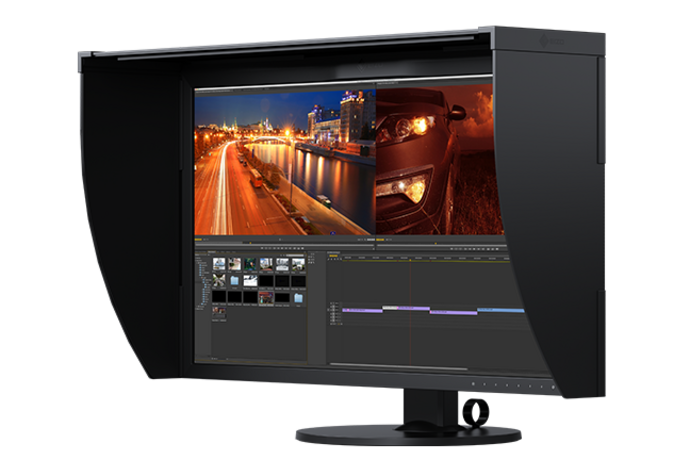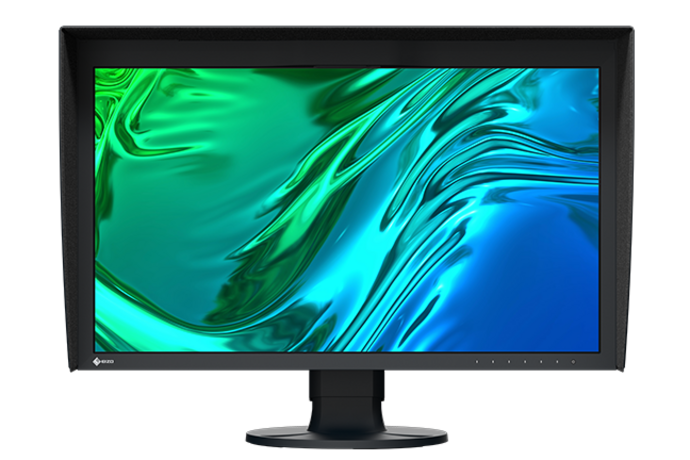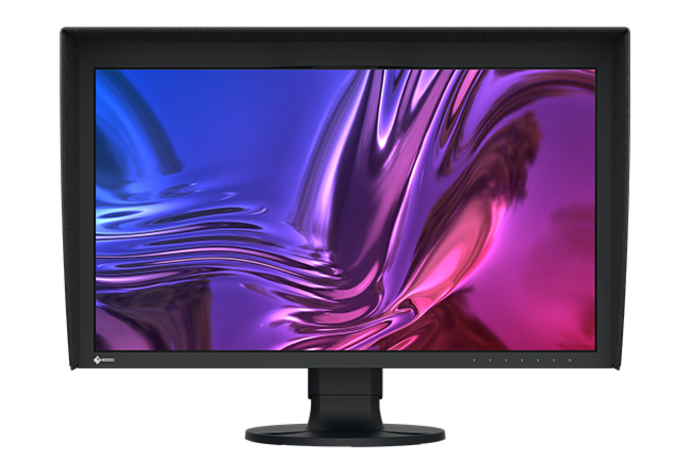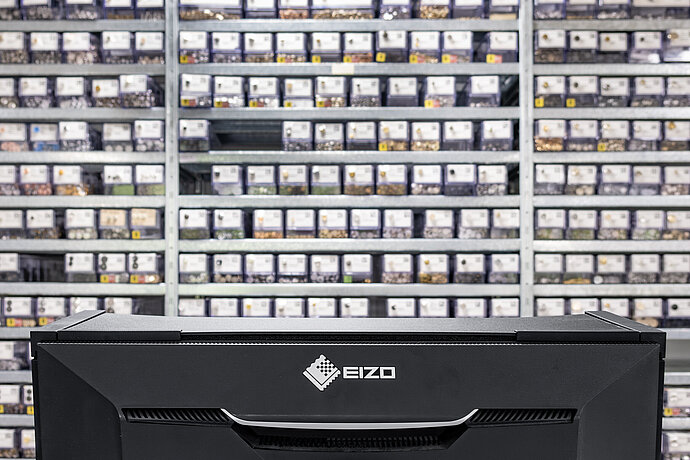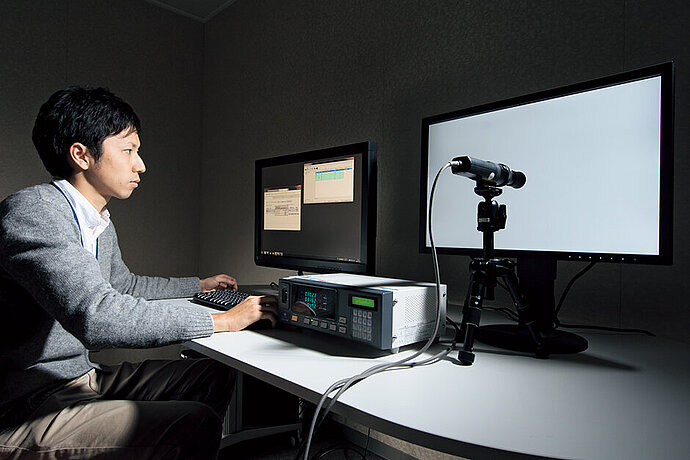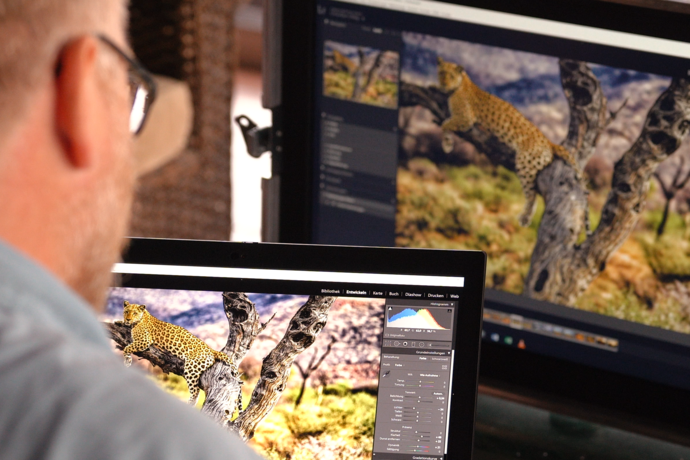Marzotto, a leading global supplier of high-quality worsted wool and fabrics from Italy, has set itself the goal of digitizing its design and sampling process as much as possible. An important tool of the new digital workflow are the ColorEdge monitors from EIZO.
ColorEdge Reference
Marzotto - innovation leader in the digitalization of the textile industry
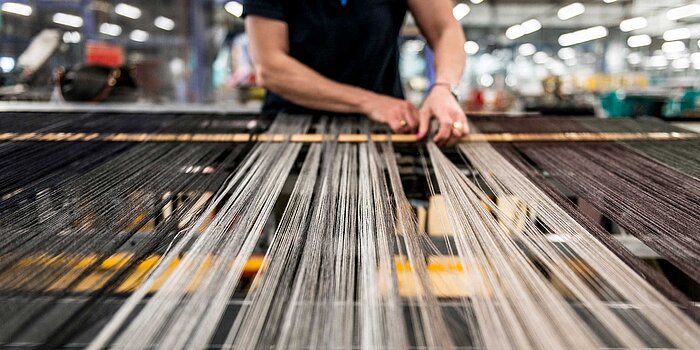
Great need for digitisation
Unlike other industries, digitisation is still in full swing in the design, sampling and manufacturing process of the fashion industry. Physical fabric samples, which are time-consuming and expensive to produce and ship, are a major obstacle in an increasingly fast-paced world. There is a lot of pressure to become faster, more efficient and cost-effective in order to meet customer needs in a timely manner. Innovation drivers are customers like Hugo Boss. The fashion label has set itself the goal of achieving a 99% level of digitalisation in procurement by 2022.
That is why Marzotto started years ago to develop a digital workflow that limits the use of physical yarn and fabric samples to the really necessary minimum. The aim was to enable a realistic digital impression of the fabrics even before physical production. The following problems had to be solved: The difficulty of simulating three-dimensional fabrics with two-dimensional CAD data of the fabric samples, to represent realistic colours with sufficient precision and to provide an interface to the customers' CAD programs.

Collaboration as a success factor
Numerous trades are involved in digitising the entire sampling process. These include the measurement of colours, yarns and fabrics, the provision of data through common interfaces, the display of digital data for the human eye on the monitor and the further processing of the data into two- and three-dimensional models. "The biggest success factor is a functioning network of competent partners who all work together on a functioning overall workflow" explains Luca Bicego, IT specialist at Marzotto the challenge and success factor for a reliably functioning workflow. "Individual solutions that work in isolation are of no use if they do not work together. That's why the expertise that comes together in the Digital Textile Connection is so valuable," as Bicego points out.
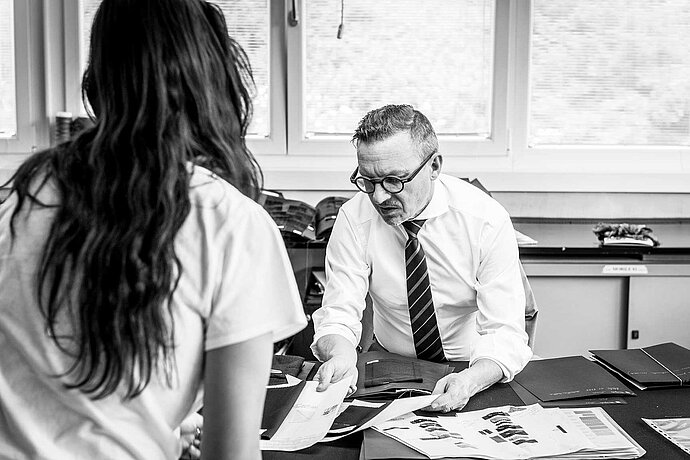
ColorEdge at the heart of the visual workflow
As long as it is only a matter of data matching of measured values in the illumination-independent L*a*b* colour space, the matching between target and actual values is easy. But as soon as visual processes are involved, an absolutely precise monitor that makes the digital colour values visible to the human eye is of utmost importance. "We have been looking for monitors that offer the degree of reproducible precision we need in the digital workflow for a long time and finally found what we were looking for at EIZO, the most renowned manufacturer of graphic monitors," explains Luca Bicego.
Marzotto currently employs 37 designers at 6 locations. The goal is to make the same virtual piece of fabric look the same on every monitor. In other words, the same as a physical piece of fabric that has been cut into 37 pieces and sent to the designers. To achieve this goal, Marzotto uses the ColorEdge CG319X and CG279X models and calibrates them on a monthly basis. To ensure that all monitors are calibrated to the same calibration target, Marzotto uses ColorNavigator7 in combination with ColorNavigator Network. This is a cloud-based solution with the help of which all monitors can be calibrated decentrally and, thanks to the built-in calibration sensors, also automatically to a uniform target. "The ColorNavigator Network, in combination with the integrated calibration sensors of the CG monitors, saves us a lot of time by not having to calibrate each monitor individually, but instead we can arrange this remotely. In addition, we can change calibration targets uniformly on all monitors should the need arise.
In order to enable a reliable comparison with physical patterns, which still cannot be replaced in certain work steps, lightboxes are also part of the setup, which guarantees a standardised and stable illumination of the patterns. This is the only way to achieve truly precise comparability of digital and physical patterns.
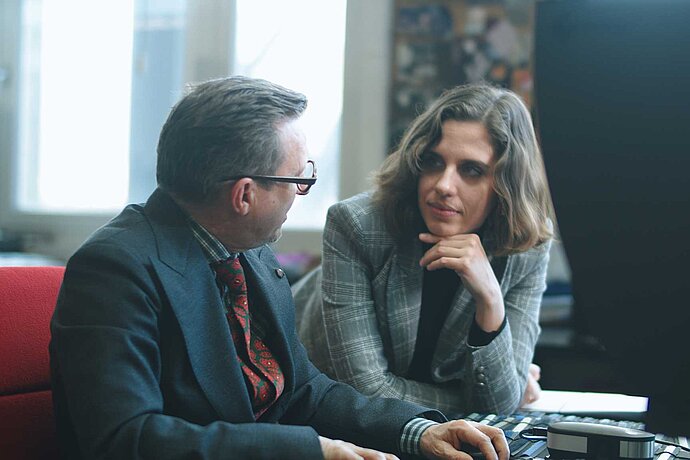
CAD simulation and distribution in the DMIx cloud
The appealing thing about the digital workflow is that it is not limited to the mere simulation of small fabric samples. By integrating them into a two- and three-dimensional visualisation workflow, the virtual fabrics can also be "dressed" directly on digital avatars and assessed for their effect on the finished product.
For this to be possible, the information that characterises the fabric must be captured in the first phase. For this purpose, Marzotto uses Penelope software solutions. The digital sample, which in addition to colour values and patterns also includes other metadata that enable CAD programs to simulate how the fabric will behave under different lighting situations in three-dimensional space, is then uploaded to ColorDigital’s DMIx Cloud in the final step. It is then available to Marzotto’s customers there as a digital asset.
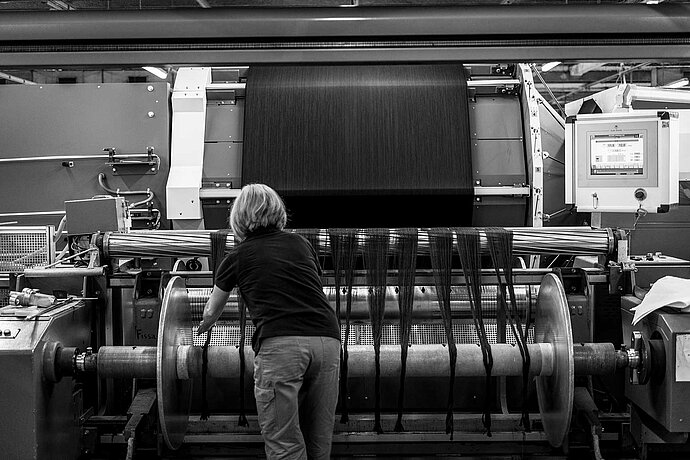
Impressive results
The success of digitising the workflow speaks for itself: Marzotto has been able to significantly reduce the creation time of a new digital fabric sample individually created for a customer compared to a physical sample, thus meeting increasingly strict deadlines.
As a result, Marzotto is able to supply its customers with the highest quality fabrics more quickly, individually and cost-effectively, and to meet the demands of an increasingly dynamic market in the best possible way.
Learn more about Marzotto Group: www.marzottogroup.it
